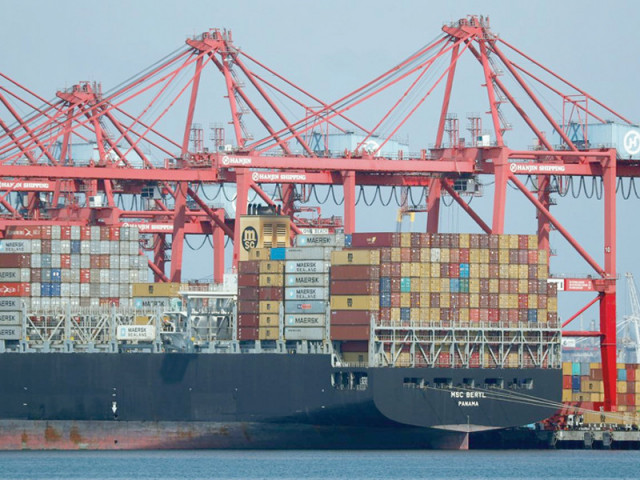Trade deficit shrinks to $13.1b
$6.4 billion cut in deficit now equals 78% of existing foreign exchange reserves

Pakistan’s trade deficit shrank to $13.1 billion during the first seven months of this fiscal year, which is $6.4 billion less than the same period of the last fiscal year. This development offsets pressure on the exchange rate market amid thin foreign exchange reserves.
During the July-January period of this fiscal year, the gap between imports and exports amounted to $13.2 billion, according to the Pakistan Bureau of Statistics. The trade deficit was $6.4 billion, over 33% less than the comparative period of the last fiscal year, it added. The $6.4 billion cut in the deficit now equals 78% of the existing foreign exchange reserves.
Pakistan has been struggling to secure non-debt creating inflows on a sustainable basis aimed at lessening its dependence on foreign debt. The country needs an average of $25 billion to $30 billion every year for at least the next three years to repay maturing debt and finance the current account deficit.
Despite major injections by international financial institutions, foreign exchange reserves remain low, standing at $8.2 billion. These reserves are sufficient to finance less than one and a half months of imports and are far below the safe benchmark of three-month cover.
Last month, Pakistan requested China to extend the $2 billion maturing loan for another one year due to its inability to pay back the amount. The caretaker government of July 2018 had taken this loan for one year, but since then, it has been rolled over every year.
The country has sought the extension on existing terms. The Chinese loan is maturing on March 23rd, and Pakistan is paying an interest rate equal to 7.1%, making it one of the most expensive borrowings. The $1 billion similar loan from the United Arab Emirates had been taken at a 6.5% rate.
Imports during the first seven months of this fiscal year remained at $31 billion, down by $5.1 billion or over 14%, according to the national data collecting agency. The government has hoped to contain imports to less than $55 billion and to earn $30 billion in exports during the current fiscal year. This still leaves it with a gap of $25 billion to be bridged through foreign remittances.
Read Trade deficit shrinks by 42% in Q1
The continued tight control over imports has lessened the pressure on foreign exchange reserves. The low available financing leaves the government with no option but to keep managing international trade.
The latest statistics indicate that imports may now even remain lower than the already downward revised projections by the global lender. Imports during the first seven months were equal to only 53% of the new IMF projection.
The PBS stated that exports picked up during the July-January period and stood at $17.8 billion. There was a $1.3 billion addition in exports in seven months, showing an increase of nearly 8%. The seven months’ exports were equal to 58% of the International Monetary Fund (IMF)’s downward revised projection of $30.6 billion.
On a yearly basis, there was also a reduction in the trade deficit, thanks to better performance of exports.
The gap between export receipts and import payments shrank to $1.94 billion in January over a year ago, reported the PBS. In absolute terms, there was a $642 million cut in the deficit, nearly equal to the last IMF loan tranche, due to a combination of a healthy trend in exports and tight control over imports.
On a year-on-year basis, in January, exports amounted to $2.8 billion, higher by $553 million, or one-fourth, compared to the same month of last year. But the exports were slightly lower than the preceding month.
Imports dropped 1.8% and remained at $4.7 billion last month. As a result, the trade deficit narrowed one-fourth to $1.94 billion in January.
On a month-on-month basis, the trade deficit widened by 6.5%. Exports shrank 1.1%, just under $2.8 billion last month compared to December. Imports also nominally increased.
Published in The Express Tribune, February 3rd, 2024.
Like Business on Facebook, follow @TribuneBiz on Twitter to stay informed and join in the conversation.


















COMMENTS
Comments are moderated and generally will be posted if they are on-topic and not abusive.
For more information, please see our Comments FAQ